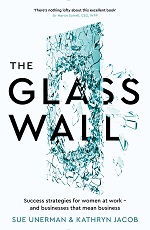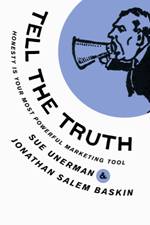 YouTube has been everywhere recently. Buses, posters, magazine features and the BBC.
YouTube has been everywhere recently. Buses, posters, magazine features and the BBC.
An episode of the Apprentice featured the candidates making a YouTube video and collaborating with YouTube stars to promote it, thus proving once again that any idiot CANNOT be funny or clever enough to go viral.
YouTube stars have also been into MediaCom’s offices. The very charming Simon Wear, Barry Taylor and Caspar Lee answered questions about how to win on YouTube.
All the stars present were naturally keen to collaborate with brands. Caspar Lee, boyband-esq star of his own channel which has over 3 million subscribers and over 160 million views, told us brands need to be “open-minded” and to trust his insights. “I have to explain to older people why its ok for me to swear, I know my generation”, he explained to us. He’s very keen on what he called “collab-ing” with brands who come with an open brief to do what he thinks best.
This echoes the views of Will Hayward VP of BuzzFeed. He draws a sharp contrast between the world of marketing brands in order simply to get noticed to those that do so to get shared.
Does this require a new kind of creative agency ? Is the world changing faster than the rules of media? Or has there always been a set of media owners who have requested that brands invest their money as the media owner thinks best. That have always said: “Lay your money down and we will look after your best interests”
Most advertising is still about getting noticed. And a standard reach plan may still satisfy. But you can’t have your cake and eat it. Brands that are using content to drive brand warmth/itp must shift to considering what makes that content share-able and to listening to the new experts, people like Caspar.
This requires a new breed of communications thinking. And it has it’s place in most plans. This isn’t about using media to get across a message that has been carefully cooked up in a creative agency. This isn’t about using media to put the cherry on top of the icing on the cake. This is delivering your recipe and some raw ingredients to the content creators and collab-ing with them so that they mix up the flour, sugar and eggs in the right way to make your cake (brand) the most shared and talked about.
This requires a swift shift to shared risk and reward as a trading model for sure. And the highest attention to detail, to the full system around the content and to real time course correction at the media agency.
This is Raw Communications Planning.





Tighter Targeting Doesn’t Mean Better Persuasion
Monday, November 24th, 2014I am sometimes asked about how programmatic will transform advertising. Clearly a benefit of programmatic is pinpoint accuracy and the reduction of wastage. But when we consider how it will transform advertising strategy overall we can look to the impact of GPS on military strategy as a related world.
I love my GPS. My relationship with GPS did get off to a rocky start as I tended to take the bossy voice of the navigator too literally and was directed across a river in full flood down in Cornwall once. Common sense prevailed but it was a disappointment. Now I wouldn’t be without it and thanks to Google Maps on my phone can rely on not getting lost anywhere I go.
Soldiers used to have to find their way around using a compass and a map. The first satellite navigation system Transit was used by the United States Navy in 1960.
The development of GPS came about on a Labor Day weekend in 1973 when a meeting of twelve military officers at the Pentagon discussed the creation of a Defense Navigation Satellite System (DNSS). It was at this meeting that “the real synthesis that became GPS was created.” But it is President Reagan who we must thank for its everyday use in stopping us losing our way.
For years it was a military system only but after a tragic incident when a Korean Air Lines Flight carrying 269 people was shot down in 1983, when it strayed into the USSR’s prohibited airspace, President Ronald Reagan issued a directive making GPS freely available for civilian use, once it was sufficiently developed, as a common good.
It is still of course used in military circumstances and as we know from the current series of Homeland is used to pinpoint accuracy for the deployment of drones.
So technology has massively improved the accuracy of targeting. But as the comment opening this blog points out, it has done nothing to improve the persuasion of opponents to a different point of view.
What is the objective of military strategy? Usually it is a good peace. More accurate missiles are clearly a great thing in the short term. Winning only comes about if we convince the opponent to a different point of view.
Convincing the potential consumer of a brand of our point of view is of course a major part of advertising strategy. More accurate targeting via programmatic is a good thing. It is only important if we can persuade the consumer of a brand’s point of view at the same time.
Posted in MediaComment | No Comments »